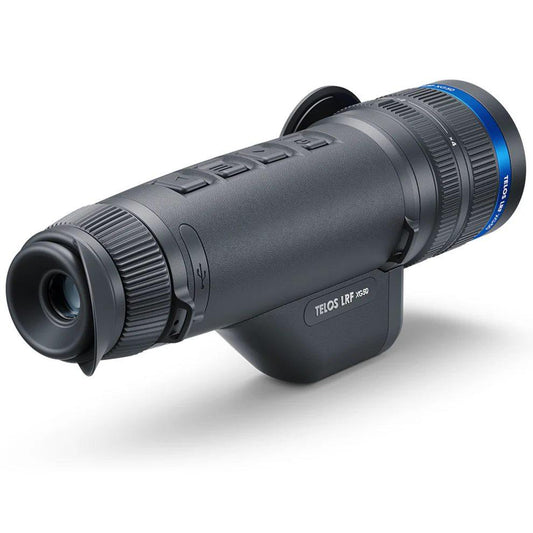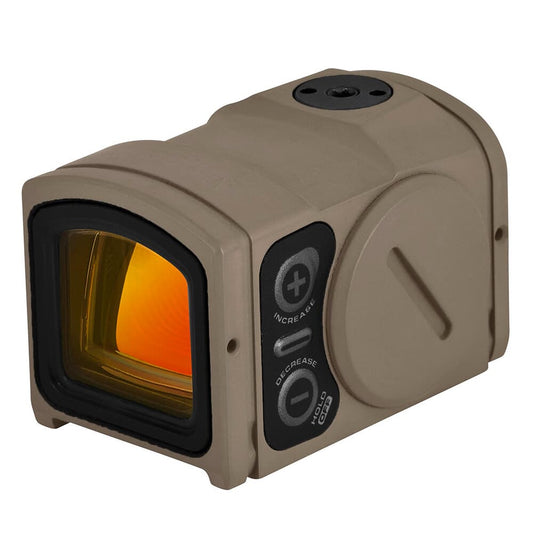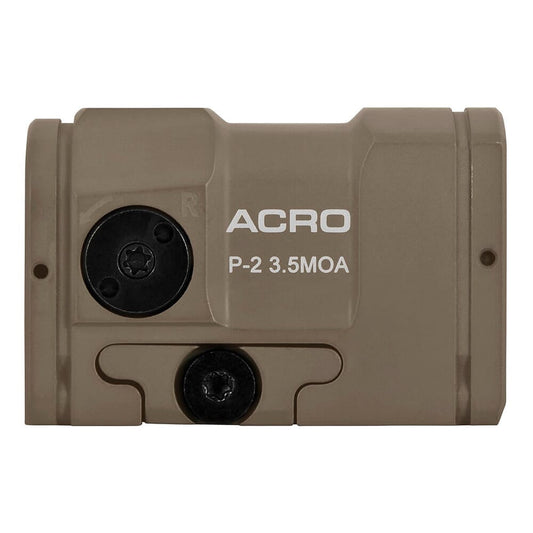

Pulsar Telos LRF XG50 Thermal Monocular delivers exceptional performance with its 1024 x 768 resolution, ensuring superior clarity for nighttime viewing. The advanced Pulsar Image Boost Technology enhances detail and contrast, making target identification straightforward even in challenging conditions. With a powerful LPS 7i Lithium-ion battery, this device offers over 8 hours of operation, allowing you to focus on your target without interruption. The intuitive adjustment rings facilitate smooth zooming, making it easier to spot distant objects.
Designed for durability, this monocular features an IPX7 waterproof rating, making it suitable for use in various weather conditions. Its ergonomic design provides a comfortable grip, while enhanced Wi-Fi connectivity and Bluetooth capabilities allow for easy sharing of images and video. Whether you're scouting or tracking game, the Pulsar Telos LRF XG50 is built to meet the demands of outdoor enthusiasts.
Features:
- HIGH RESOLUTION for stunning image clarity, capturing every detail in the field.
- POWERFUL BATTERY for over 8 hours of continuous use, eliminating downtime during critical moments.
- ADVANCED ZOOM functionality allows for precise targeting, ensuring accuracy during long-range shooting.
- USER-FRIENDLY DESIGN with ergonomic, nonslip housing for comfortable handling in various conditions.
- ENHANCED CONNECTIVITY featuring USB-C charging and wireless options for seamless operation.
- BUILT-IN RECORDING capabilities so you can capture videos and photos of your hunting successes.
- IPX7 WATERPROOF rating ensures durability against the elements, perfect for outdoor adventures.
- COMPATIBLE WITH ACCESSORIES that allow customization to suit your specific needs and preferences.
Technical Specifications Table
| Specification | Details |
|---|---|
| Magnification | 3.5-14x |
| Resolution | 1024 x 768 |
| Battery Type | LPS 7i Lithium-ion |
| Weight | 650g |
| Dimensions | 205 x 72 x 65 mm |
| Waterproof Rating | IPX7 |
What’s in the Box?
- Pulsar Telos LRF XG50 Thermal Monocular
- USB-C Charging Cable
- User Manual
- Lens Covers
- Padded Case
Customer Reviews
“The clarity in low light is unbeatable! Perfect for my nighttime hunts.”
“The battery life is impressive, and the zoom feature is so smooth.”
“Highly recommend this monocular for anyone serious about thermal imaging.”
FAQ
How does the Pulsar Telos LRF XG50 perform in low light conditions? The thermal monocular excels in low-light settings, providing clear images thanks to its high resolution and advanced imaging technology, which allows you to spot targets with ease during nighttime.
Can I charge the Pulsar Telos using a power bank? Yes! The Pulsar Telos LRF XG50 features a USB-C charging port, making it compatible with any USB-C power bank, ensuring that you can keep powered up even in remote locations.
Similar Models
If you're intrigued by the Pulsar Telos LRF XG50, explore our full collection of Pulsar optics, including the Pulsar Axion XQ38 for compact thermal imaging and Pulsar Trail LRF XP50 for advanced long-range targeting. Discover the perfect fit for your adventure!
You May Also Like
Here’s some of our most similar products people are buying. Click to discover trending style.








